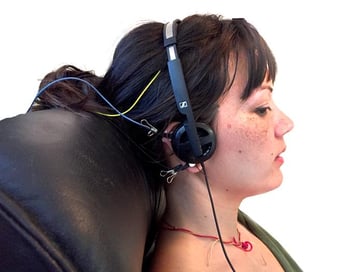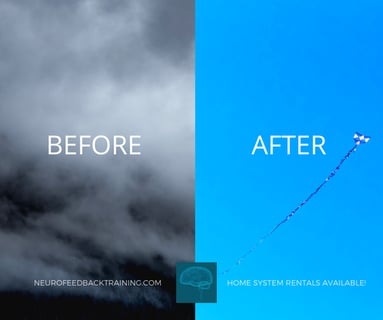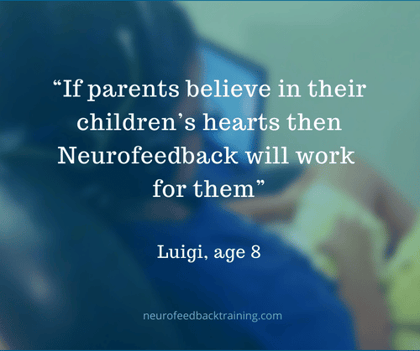Performance Anxiety - Can Neurofeedback Help?
Neurofeedback is an effective tool for dealing with performance anxiety and fear. Neurofeedback training is a safe way to train your brain and...
Discover the benefits of neurofeedback in Boulder, CO. Visit our blog to learn more about our personalized brain training programs.
Training the body for peak performance is what Boulder, Colorado is all about. Athletes come from around the world to take advantage of the high altitude and foothill mountains to get themselves in top physical fitness. It is also a city where families value wellness and a healthy lifestyle.
 It's no surprise that neurofeedback is taking off in Boulder. Neurofeedback is a form of EEG biofeedback, used to generate peak mental and emotional performance.
It's no surprise that neurofeedback is taking off in Boulder. Neurofeedback is a form of EEG biofeedback, used to generate peak mental and emotional performance.
Recently, Neurofeedback Training Co. formed a partnership with local neurofeedback trainer Joy Om. We are thrilled that she has joined our team in offering in-office neurofeedback sessions in Boulder for client seeking to optimize their health. To welcome her, I asked about her experience as a bodyworker and how adding neurofeedback helped her professional routine, as well as the results she has seen in her clients.
But first, let's ask: How does neurofeedback work and how are people using it for mental and emotional fitness?
NeurOptimal® Neurofeedback has been used by wellness professionals for over 20 years. The software, now on version 3.0, is designed to work based on how the brain naturally optimizes its own performance. It has been proven in neuroscience that the brain is capable of change. Discoveries such as neuroplasticity and neurogenesis shows that the brain is quite flexible if it is provided with real time feedback.
 Give the brain good data and it will use it to optimize. The brain is always trying to use its energy to make the most efficient and effective decisions.
Give the brain good data and it will use it to optimize. The brain is always trying to use its energy to make the most efficient and effective decisions.
The neurofeedback software uses mathematical calculations that translate the brain's main communication, which are electrical currents, into brain wave frequencies. The data is collected through EEG sensors pasted to the sides of the head and clipped to the ears. These sensors only collect information, nothing goes back to the brain through the wires. The neurofeedback software collects 256 data points per second, and at the exact millisecond that the brain's electrical patterns change, the system provides feedback.
 The feedback is given through micro-interruptions in music that is playing during the brain training session. The brain's natural way to keep track of changes in the environment is through listening. This is not the listening we do when we are concentrating on sound; it is the passive listening that is always happening. For example, the listening that wakes us up when a child whispers "Mom" when we're sound asleep.
The feedback is given through micro-interruptions in music that is playing during the brain training session. The brain's natural way to keep track of changes in the environment is through listening. This is not the listening we do when we are concentrating on sound; it is the passive listening that is always happening. For example, the listening that wakes us up when a child whispers "Mom" when we're sound asleep.
The alerting process that happens throughout the training session is a precisely timed back-and-forth dynamic between the brain and the software. When alerted, the brain begins to observe its habits. The brain is an information processing center designed to optimize its use of energy and make the best decisions. Giving it good, real-time information allows the the brain to correct bad habits.
Benefits of Neurofeedback - What Can You Expect?
Because the brain is involved in a lot of different areas of functioning-- such as sleep, cognitive skills, memory, emotions, language, and communication with the rest of the body-- we can create shifts in a number of areas when we train with neurofeedback. Clients often focus on just one or two goals but because NeurOptimal® is designed to target overall functioning, they can see unexpected positive changes.
The main areas that people report benefits in are sleep management, mental fitness and emotional fitness. All three of these are essential for peak performance in athletics, at work or in school. Optimization through brain training is different for everyone because every brain is different. Likewise, every individual has different supports and factors that either support or hinder the changes.

Below is my interview with Joy.
Natalie Baker: Joy, you had been a bodyworker for a long time, what made you decide to introduce a neurofeedback device to your practice?
Joy Om: I was a Rolfer for 30 years and a Cranial Therapist for 12 years before adding neurofeedback to my practice. I had seen many deep changes in people with both modalities of structural and energetic interventions but could see that people wanted to go deeper into their holding patterns to make real shifts in their lives.
Most people have some kind of shock or trauma in their system - from accidents, injuries or life events - and it seemed that the neurofeedback would help the nervous system correct and relax even more than cranial therapy.
I was working with several people who were ready to make changes in their life and leave the past behind to become more of their true selves in the world. I found that the neurofeedback, along with supportive counselling, allowed them to release, relax and be more present in their daily lives - and clients love to use neurofeedback at home, which was an option for them with the introduction of the NeurOptimal system.
Natalie Baker: You mentioned to me that you enjoy working with children and teenagers. What changes do you see for them?
Joy Om: I love the changes that happen for children doing neurofeedback, especially those with learning and focusing difficulties. Over time I see that children who train with the NeurOptimal® system shift into a calmer state, are less impulsive, and act out less because they are more in control. And to see them improve in their school performance after struggling is wonderful. In Boulder, we have a lot of parents looking at holistic and alternative options to help their children stay more focused and boost their self-esteem. Since this neurofeedback training is completely non-invasive it was a natural choice for me to bring it into my practice.
 In preparation for our interview, I read through some of my case files and found this note a mom sent me with a neurofeedback review after their 10-year-old son was trained for focus and performance anxiety issues.
In preparation for our interview, I read through some of my case files and found this note a mom sent me with a neurofeedback review after their 10-year-old son was trained for focus and performance anxiety issues.
“After 20 sessions, we started noticing real changes. He was remembering things from school, he was doing chores without being asked multiple times. Teachers noted he seemed a lot less worried and was needing fewer re-directs in class. We are so happy to have found you Joy and NeurOptimal. We have tried so many different methods to help our child and neurofeedback training has been the only one we saw a real change from!”
- A.S. in Colorado

Natalie Baker: It’s wonderful. Reminds me of Luigi, a boy who came to our NYC centre for sessions and who we saw great results within his school performance, who we featured in a video interview. Some neurofeedback trainers require parents to train along with the children because they see the greatest benefits from neurofeedback when families train together. Do you?
Joy Om: It’s not required, but when I suspect an adult has a high-stress response or excessive worrying I will strongly encourage them to do the training as well. When parents train along with their kids there is the bonus of them relaxing and their relationships with their children improving. Everyone is so much less reactive.
I remember a mother/son who was training and she wasn’t at all expecting to have profound results herself as she thought their neurofeedback was mainly for her son’s anger and impulsivity. She reported being so happy because her thinking got clearer, she felt her “over-active” brain was calmer and she slept much better. He became emotionally calmer, much less angry and impulsive, which then allowed him to express himself with words and school life improved.
Natalie Baker: You also work with people who are on a spiritual path, not surprising considering it’s Colorado, where you have a lot of spiritual communities. What do you notice in people who are practising meditation and also doing neurofeedback training?
Joy Om: I sometimes like to call this neurofeedback ‘meditating the brain’ because of the inner, subtle changes that are possible along with the more obvious changes in behaviour, attitude and abilities. For example, I had a woman come for neurofeedback for anxiety reasons she had been a meditator since the early 1970s, and she told me in three months of neurofeedback she felt like she took a "quantum leap" in her meditation practice. Increased inner silence, calm and mental stability are common, and meditators really notice that shifting because they’ve already cultivated some degree of self-awareness.
Natalie Baker: Thanks Joy, for sharing some of your insights and for joining the Neurofeedback Training Co. so we can offer in-office sessions and neurofeedback rentals in Boulder, Colorado!
The cost of renting a neurofeedback system ranges from $650 - $950 per month (plus sales tax for Colorado residents). It will roughly come down to $40/session or $40 per day. Renting is ideal when multiple family members are training or when wanting to do multiple sessions per week. Read our exclusive renting guide to learn everything you need to know before renting a NeurOptimal® unit from us.
Natalie Baker has over 25 years of experience as a licensed psychotherapist and has been a NeurOptimal® neurofeedback trainer since 2011. She is the founder of Neurofeedback Training Co., which offers in-person sessions and runs the largest nationwide home rental program for NeurOptimal systems. Natalie also teaches meditation and Buddhist psychology and specializes in working with anxiety, stress, ADHD, and trauma.
Neurofeedback is an effective tool for dealing with performance anxiety and fear. Neurofeedback training is a safe way to train your brain and...
Peak Performance for Everyone: Experience the Flow State. Achieve peak performance and experience the flow state with NeurOptimal.
Peak Performance with Neurofeedback: Achieve the Flow State. Train your brain to perform at its best with Neuroptimal.
Be the first to know about new blogs